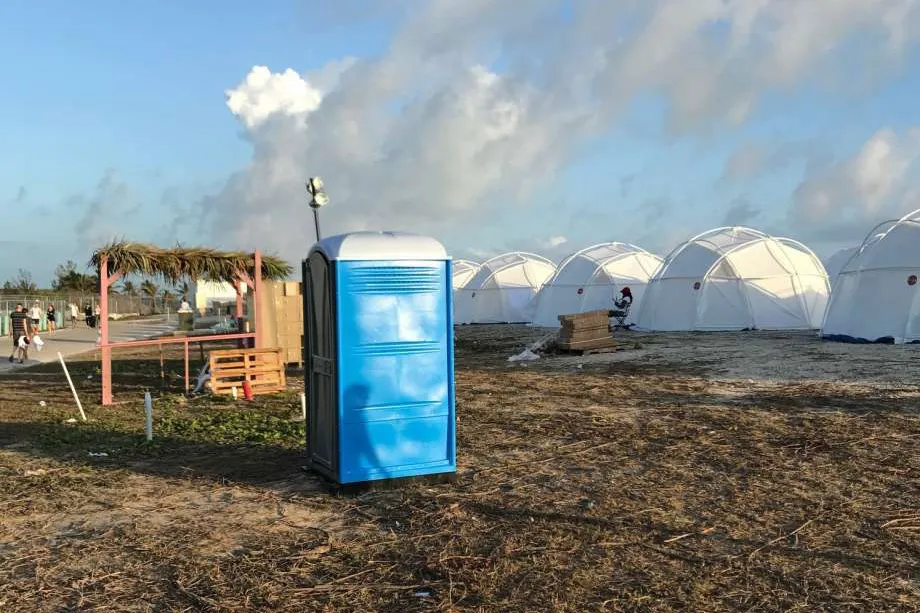Bounce Back Stronger: Analyzing and Learning from Event Failures


The truth hurts, but not all events are successful. Event failures are common and can be a major setback for any event organizer or company. But instead of dwelling on the failure, it’s important to analyze and learn from it to bounce back stronger and build a more resilient event strategy.
In this article, we’ll explore the importance of analyzing event failures and how they can lead to future event success.
The Top Reasons for Event Failures with Prevention Strategies
Event planning is a multifaceted endeavor, encompassing everything from logistical coordination to marketing. Despite meticulous planning, events can still fall short of expectations for various reasons. Understanding these common pitfalls is the first step toward ensuring your next event is a success. Here are some of the most prevalent reasons events fail, along with strategies for preventing these issues in the future:
1. Inadequate planning and organization
One of the leading causes of event failure is insufficient planning. This can manifest in several ways, including unrealistic timelines, poor scheduling, and lack of detail in the planning phase.
Prevention strategy: Start with a detailed plan covering every event aspect, from timelines and venue selection to vendor contracts and emergency plans. Utilize event planning software or checklists to keep track of tasks and deadlines.
2. Budget mismanagement
Events can quickly become financial burdens when budgets are not properly managed. Overspending in one area can lead to cutbacks in others, impacting the overall quality of the event.
Prevention strategy: Create a comprehensive budget at the outset, allocating funds for each event component. Regularly review and adjust the budget as planning progresses; always have a contingency fund for unexpected expenses.
3. Poor Venue Choice
The choice of venue can make or break an event. Factors such as size, location, accessibility, and facilities play a critical role in the success of an event.
Prevention strategy: Select a venue that aligns with the event’s objectives and audience size. Consider accessibility and logistical requirements, and conduct thorough site visits before finalizing your choice.
4. Ineffective Marketing and Promotion
An event cannot succeed without attendees; people won’t come if they don’t know about the event or aren’t sufficiently persuaded of its value.
Prevention strategy: Develop a comprehensive marketing strategy that targets your desired audience through the right channels. Utilize social media, email marketing, partnerships, and traditional advertising to build awareness and excitement.
5. Lack of Contingency Planning
Events are susceptible to unforeseen issues, from bad weather to technical problems. Failure to plan for these possibilities can result in chaos.
Prevention strategy: Identify potential risks during the planning phase and develop contingency plans for each. Being prepared can save the day, whether that means having backup vendors, indoor options for outdoor events, or extra technical equipment.
6. Ignoring Attendee Feedback
Past events can offer invaluable insights into what works and what doesn’t, but only if this feedback is collected and considered.
Prevention strategy: Implement methods to gather feedback from attendees, such as post-event surveys or feedback forms during the event. Use this data to make informed improvements to future events.
7. Failure to Engage the Audience
An event’s success is about not just execution but also engagement. If attendees do not feel involved or interested, their overall experience can be negatively affected.
Prevention strategy: Plan interactive elements and engagement opportunities throughout the event. From Q&A sessions and live polls to networking opportunities and hands-on workshops, ensure plenty of chances for attendees to participate actively.
8. Underestimating the Importance of Experience
In the age of social media and digital connectivity, the experiential aspect of events has never been more important. Failing to create a memorable experience can make an event feel flat and forgettable.
Prevention strategy: Create unique, memorable experiences that resonate with your audience. This can include innovative use of technology, surprise elements, exceptional speakers, or unique venue setups.
Understanding these common reasons for event failures and implementing targeted prevention strategies is about learning from past mistakes and continually striving to improve the event experience for everyone involved.
How To Analyze Event Failures
Now that we understand some common reasons events fail, let’s explore how to meaningfully analyze a failed event to build a resilient event strategy. Here are some steps you can follow to analyze event failures:
Gather Feedback from Attendees, Staff, and Stakeholders
Feedback from attendees, staff, and stakeholders is invaluable in understanding the shortcomings of an event. By gathering feedback through surveys, reviews, or direct conversations, you can gain insights into what worked well and what needs improvement. Interpreting this feedback effectively will help you prioritize areas for enhancement and tailor your strategies accordingly.
Conduct a Thorough Post-event Analysis
After an event failure, conducting a thorough post-event analysis is essential. This involves reviewing all aspects of the event, from planning to execution, to identify what went wrong and why. By analyzing the event in detail, you can pinpoint areas that need improvement and develop strategies to prevent similar failures in the future.
Review Event Data and Metrics
Another important step is to review event data and metrics. This could include attendance totals, engagement rates, and sales numbers. By analyzing this data, you can understand which areas of the event were successful and which were not. This will help you identify any patterns or trends contributing to the failure.
Conduct a Post-Event Debrief with Your Team
It’s important to involve your team in the analysis process. Schedule a post-event debrief where you can discuss what went wrong and why. Encourage team members to share their perspectives and ideas for improvement. This will not only help you gain a better understanding of the failure but also foster a culture of learning and improvement within your team.
Compare with Previous Successful Events
If you have organized successful events in the past, comparing them with the failed event can be helpful. Look for any differences in planning, execution, or attendee feedback. This can help you identify areas where you may have deviated from your successful event strategies and make necessary adjustments.
Strategies for Learning from Event Failures
Failures in event planning, while often viewed as setbacks, can serve as powerful catalysts for growth and improvement. Embracing and learning from these challenges is not just about recovery; it’s about seizing opportunities to refine strategies, improve planning processes, and ultimately enhance the event experience for everyone involved.
This perspective shift — from seeing failure as a negative outcome to viewing it as a stepping stone toward success — is crucial in the dynamic and unpredictable field of event planning. The strategies outlined below are designed to transform how event planners approach, analyze, and learn from failures, laying the groundwork for future success.
Adopt a Growth Mindset
Adopting a growth mindset is fundamental to transforming failures into stepping stones.
- Embrace failures as learning opportunities: Recognizing that each failure is an opportunity for growth changes the narrative from disappointment to potential. This positive outlook encourages teams to analyze what went wrong and use those insights to build stronger, more successful future events.
- Encourage open dialogue about what went wrong: Creating an environment where failures can be discussed openly and constructively is essential for collective learning. It fosters a culture of trust, encourages the sharing of ideas, and facilitates constructive feedback, which is invaluable for improvement.
- Understand and manage emotions: Emotional intelligence plays a crucial role in navigating the aftermath of an event failure. Recognizing and managing one’s emotions and empathizing with team members and attendees who might be disappointed can aid in maintaining morale and fostering a supportive environment for collective recovery and learning.
Take an Analytical Approach
Data analysis is vital to understanding what went wrong and how to improve events.
- Use data and feedback to understand the failure points: A thorough, data-driven approach is essential to uncover the root causes of any mishap. This involves analyzing attendee feedback, engagement metrics, and logistical outcomes to pinpoint where things went astray and identifying actionable areas for improvement.
- Implement tools and technologies for better event analytics: Modern event planning benefits greatly from technology. By adopting advanced event management software, analytics tools, and feedback platforms, planners can gain deeper insights into their events, from planning and execution to post-event analysis. This technological support simplifies data collection and enhances the accuracy and relevancy of the insights derived.
Enhance Stakeholder Communication
- Build trust through transparency: Effective communication with stakeholders, including sponsors, partners, and vendors, after an event failure is key to preserving relationships and trust. Provide honest assessments of what went wrong, accompanied by clear plans for improvement, to help maintain stakeholder confidence in your ability to deliver successful events in the future.
- Engage in collaborative problem-solving: Invite stakeholders into the problem-solving process. Their insights and perspectives can contribute to the development of more robust strategies for future events.
Tackle Strategic Planning for Future Events
Being realistic and prioritizing contingency planning can mitigate the risks of future failures.
- Set realistic goals and expectations: Clear, achievable goals are the cornerstone of successful event planning. They guide the planning process, inform decision-making, and provide a benchmark for evaluating an event’s success. By setting realistic objectives, planners can align their resources and efforts more effectively, ensuring a smoother path to event execution.
- Create detailed contingency plans: The unpredictable nature of events makes contingency planning indispensable. Identifying potential risks and preparing for them with well-thought-out backup plans can dramatically reduce the impact of unexpected issues. This proactive approach ensures planners can pivot as needed, maintaining control over the event’s outcome.
- Seek guidance from industry peers: No event planner operates in a vacuum. Building and leaning on a network of industry peers can provide crucial support, whether by sharing best practices, discussing lessons learned from similar experiences, or offering mutual encouragement.
Implement Changes and Continuous Improvement
After carefully analyzing event failures, it’s critical to implement the lessons learned.
- Adjust planning and execution processes: Embracing a mindset of ongoing learning and adaptation allows event planners to evolve their practices, ensuring each event is better than the last. Through persistent improvement and a commitment to excellence, planners can avoid past pitfalls and innovate and elevate the overall event experience.
- Prioritize professional development and continuous learning: Actively seeking professional development opportunities, such as workshops, conferences, and seminars focused on event planning, can equip planners with new strategies and tools to prevent and manage failures. Continuous learning helps keep skills sharp and ideas fresh, contributing to resilience and adaptability.
5 Real-world Examples of Event Failures and Lessons Learned
Let’s look at some real-world examples of companies that have successfully bounced back from event failures by analyzing and learning from them.
1. Fyre Festival (2017)

What happened: Advertised as a luxurious music festival on a private island in the Bahamas, Fyre Festival promised top-tier musical acts, gourmet meals, and lavish accommodations. However, attendees were met with unfinished grounds, inadequate housing, and insufficient food and water, leading to the event’s abrupt cancellation.
Lessons learned: Fyre Festival underscored the critical importance of logistical planning and realistic expectations. It highlighted the dangers of false advertising and the need for transparency with your audience. The fallout also stressed the importance of financial management and the ethical responsibilities of event organizers.
Want to hear more about lessons learned from the Fyre Festival? Check out Fyre and Ice: A Candid Conversation with Billy McFarland that Julius Solaris hosted on Bizzabo’s Event Experience OS.
2. DashCon (2014)
What happened: DashCon was intended as a convention for fans of Tumblr, featuring panels, workshops, and guest speakers. However, it quickly unraveled due to poor organization, financial mismanagement, and unfulfilled promises, including a guest speaker lineup that largely didn’t materialize. Attendees were even asked to donate money to cover unexpected venue costs.
Lessons learned: This debacle stressed the need for accurate budgeting, clear communication with both attendees and attendees, and the importance of having a contingency fund. It also highlighted the need for event organizers to have a solid contract and understanding with venues and suppliers.
3. TanaCon (2018)

What happened: Created by YouTube personality Tana Mongeau as an alternative to VidCon, TanaCon was overwhelmed by more attendees than it could handle. Many people spent hours waiting in the sun, leading to safety concerns that prompted organizers to cancel the event on the first day.
Lessons learned: TanaCon illustrated the dangers of over-promising and under-delivering. It emphasized the importance of accurate attendee forecasting, venue capacity planning, and the need for professional event planning and crowd management expertise in organizing large-scale events.
4. The Melbourne Olympic Games Torch Relay Prank (1956)
What happened: In a lighter example of an event gone awry, students from the University of Sydney decided to prank the Olympic torch relay by creating a fake torch out of a wooden chair leg and a pudding can. The mock torchbearer, Barry Larkin, managed to fool the crowd and even handed the fake torch to the Mayor of Sydney, creating a moment of embarrassment for the organizers.
Lessons learned: This humorous incident taught the importance of security and verification in public events. It highlighted the need for organizers to anticipate and plan for potential disruptions, ensuring the authenticity and integrity of the event are preserved.
5. Apple’s iPhone 4 Launch Event (2010)
What happened: Apple encountered a significant hiccup during the highly anticipated launch event for the iPhone 4 in 2010. When then-CEO Steve Jobs attempted to demonstrate the new iPhone’s innovative video calling feature, FaceTime, he encountered technical difficulties that prevented the demo from working as planned. The Wi-Fi network became overloaded in a room packed with attendees and live-stream viewers, disrupting the demonstration. Instead of avoiding the issue, Jobs acknowledged the glitch and humorously asked the audience to disconnect from the Wi-Fi to reduce network congestion, making light of the situation.
Lessons learned:
- Transparency and humor can defuse tension: One of the key takeaways from this incident is the power of transparency and humor in addressing problems. By openly acknowledging the issue and incorporating humor, Jobs defused a potentially tense situation, maintaining the audience’s goodwill.
- Be prepared for technical difficulties: This event underscored the importance of thorough preparation for technical presentations, including having contingencies for live demos. It’s crucial to plan for and test all possible scenarios that could go wrong during a public demonstration, especially when relying on external factors like network connectivity.
- The value of resilience: Apple’s response to the mishap demonstrated resilience. Instead of letting the failed demo overshadow the event, they highlighted the iPhone 4’s features and innovations, showing that setbacks can be overcome with the right attitude and focus on the overall message.
- Be transparent: Apple’s ability to handle the failure gracefully helped preserve its reputation for innovation and quality. Addressing issues head-on, rather than trying to hide them, can enhance a brand’s image, showing they are confident and capable of handling challenges.
- The power of continuous improvement: The iPhone 4 launch incident likely led to improved planning and execution for future Apple events. Ensuring that technical setups are foolproof and anticipating potential issues became even more of a priority, leading to smoother presentations in subsequent product launches.
These examples are potent reminders of what can go wrong in event planning. They teach us the importance of meticulous planning, transparent communication, realistic goal-setting, and contingency plans.
Each failure provides valuable lessons that, when heeded, can lead to the improvement and success of future events. The ability to learn from past mistakes, adapt strategies, and implement changes is crucial for any event planner aiming for success in this challenging but rewarding field.
Get Started: Bounce Back from Failure and Achieve Continuous Success
The mishaps and lessons learned from events like DashCon, TanaCon, the 1956 Melbourne Olympic Games Torch Relay Prank, and Apple’s iPhone 4 Launch Event emphasize the critical importance of meticulous planning, transparent communication, and contingency plans in event planning. To ensure successful events in the future, event planners must prioritize accurate budgeting, clear communication with all stakeholders, accurate attendee forecasting, venue capacity planning, and thorough preparation for technical presentations.
By learning from past mistakes, adapting strategies, and implementing changes, event planners can enhance their resilience, defuse tensions with transparency and humor, and ultimately deliver exceptional experiences for attendees. Embracing continuous improvement and a proactive approach to event management will pave the way for successful and memorable events in the future.



